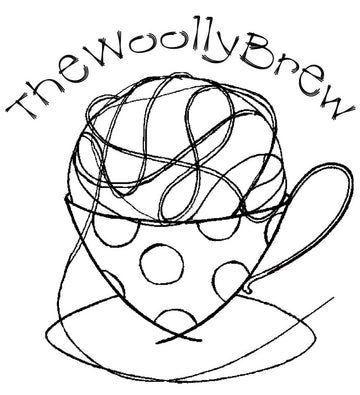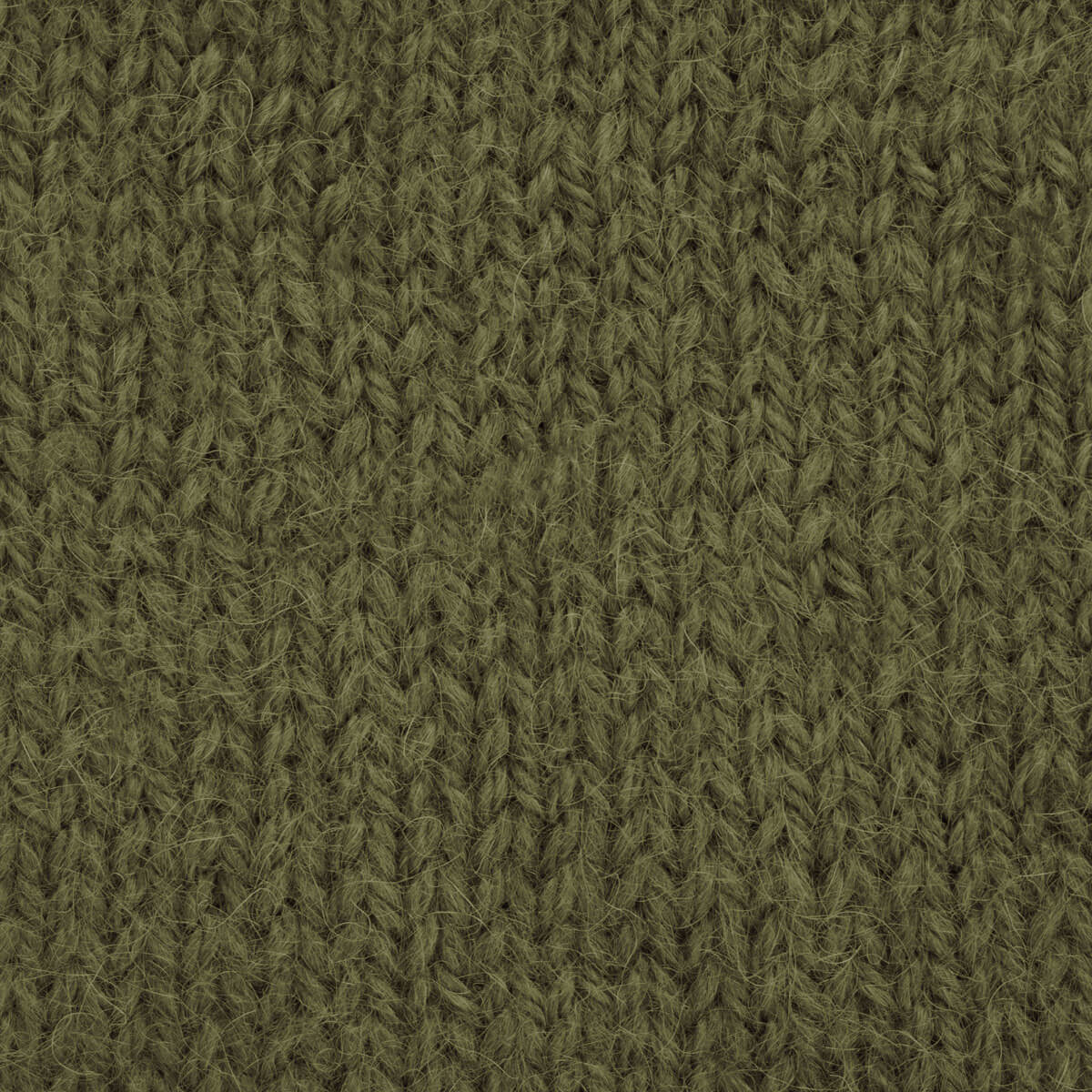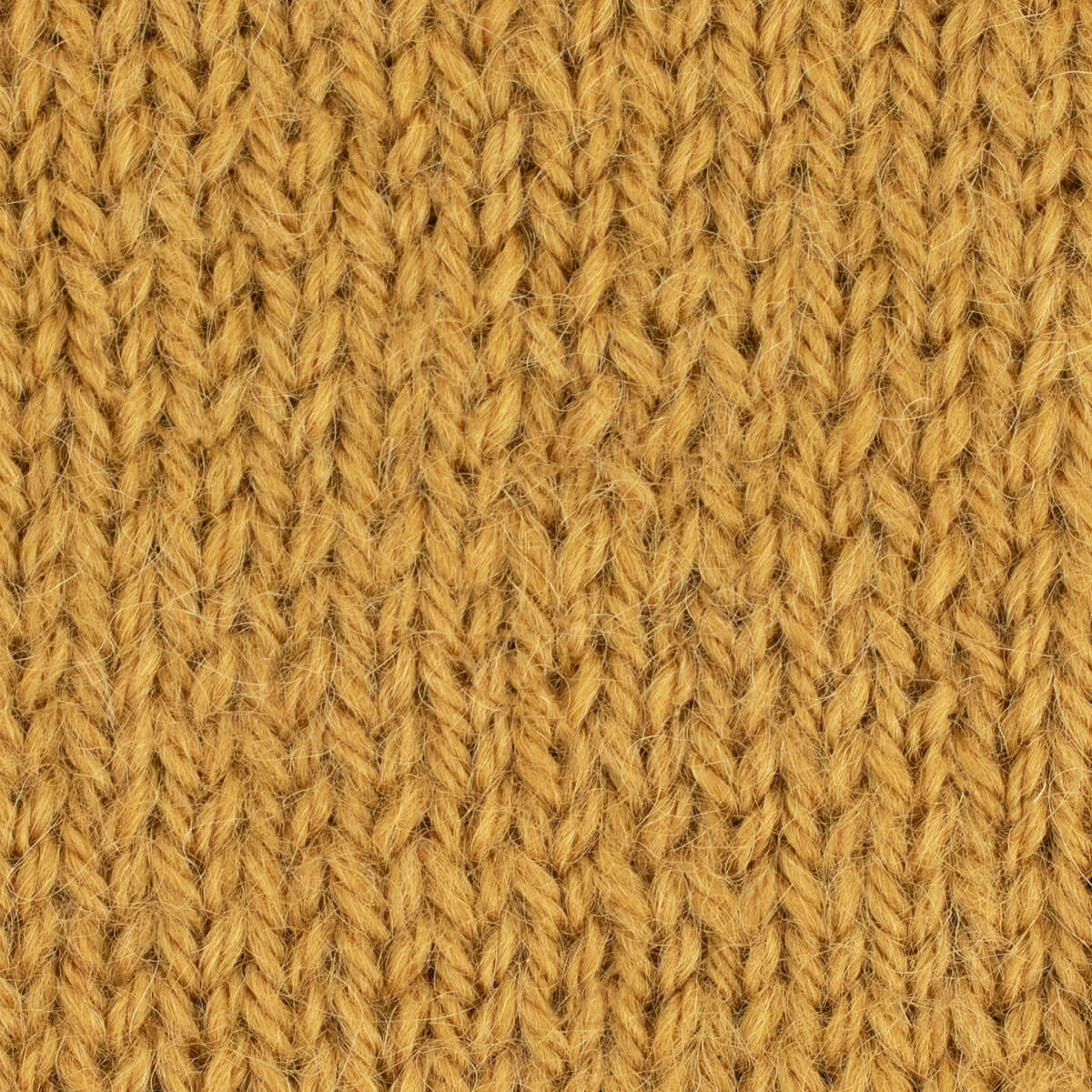
Dewberry Cowl is a super quick project, perfect for a quick fix, gift giving, stash busting and keeping you warm!
It's designed by Hilary Smith Callis and the pattern is available to buy on Ravelry and as a digital pattern in the Pittenweem shop.
Knitted in an aran weight yarn, you start at the top and knit back and forth, combining garter stitch stripes with an easy eyelet lace. You gradually increase until you're ready to join to work in the round, continuing the garter stripes and eyelet lace.
This creates a cowl that sits round and low at the neck. It fills in the gap of your jacket, and adds extra warmth and decoration to wide or low necked tops.

Dewberry Cowl worn with Caine slipover.
I used our new yarn aran - WYS Fable Aran - in shade 1228 Titan.
Fable is a blend of British wool, alpaca and mohair. It drapes beautifully (perfect for a cowl) and has a cosy halo.
The cowl is written for two sizes. I knitted the large size which used 120g of Fable so you will need 2 balls. I think you could get a small size from 1 ball but be prepared to play yarn chicken and maybe do a few less rows.
If you want to use a different yarn you'll need 175m for the smaller size and 225m for the larger size.
This was a quick win as it took less than 5 days of relaxed knitting to make.
To block it I soaked in Eucalan then squished out excess water in a dry towel. I pinned it to the shape shown in the pattern.

I realised after that this puts a crease right down the middle of the front. So once it was dry I very carefully steamed the crease out.
This is not a tricky project and I found the instructions clear and well laid out. Some additional skills you may need if you're a beginner knitter:
Garter Tab Cast On - this sounds very fancy but is quite simple to do. It allows the cast on to flow into the garter stitch edge. Just follow the instructions as written. If you need a visual guide check out this photo and video tutorial by Ysolda.
Increasing is done using the M1 method. This method of increasing makes a stitch from the strand between two stitches on the needle. M1 is explained in the pattern and it's also known as M1L. You need to use this method and NOT KFB otherwise you will mess up the stitch counts. You can see the method in action here at Tin Can Knits.

The holes are made using YO and K2tog. YO in this pattern means bringing your yarn to the front of your work between the needle tips before working the next stitch, which is Knit 2 stitches together (K2tog). This is an easy way to create holes on purpose in your knitting. The YO makes a stitch and the K2tog decreases a stitch. So you're stitch count will stay the same.
Knitting in the round after knitting flat - just follow the instructions in the pattern! This is a good project for showing the difference between knitting flat and knitting in the round.
When you knit flat you have to turn your knitting around to start each new row. To make garter stitch you just knit every row and to make stocking stitch you knit one row and then purl one row.
But when you knit in the round you do not need to turn your knitting to start another row, you simply carry on knitting in the round. This means that to make garter stitch you need to knit one round and purl one round and to make stocking stitch you just knit every round.
You'll see in the Dewberry Cowl pattern how the stitch pattern is written differently depending on whether you are knitting flat or in the round but both will give the same results.
To Recap.
Dewberry Cowl is a digital pattern. You can buy it in the Pittenweem shop and it will be emailed to you or you can buy it on Ravelry.
We used WYS Fable Aran to knit our Dewberry. You can use any other aran weight yarn. 175m for the smaller size and 225m for the larger size.
I used 120g (less than 2 balls) of WYS Fable Aran in shade 1228.
You will also need a 5mm, 40 or 60cm long circular needles and a stitch marker.

































